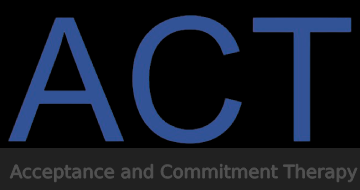IIRF Online > Health & Fitness > Mental Health > Acceptance and Commitment Therapy (ACT) > Acceptance and Commitment Therapy (ACT)
Acceptance and Commitment Therapy (ACT) by Udemy
Learn ACT: Explore how therapists use cognitive behavioral therapy and mindfulness to increase psychological flexibility
Course Highlights
- Acceptance and Commitment Therapy (ACT)
- ACT is a form of cognitive behavioural therapy that uses mindfulness
- How to deliver ACT step-by-step
- Use ACT to improve people's mental health
Skills you will learn!
Curriculum
6 Topics
Welcome
Course goals and outline
How to use this course
Course handbook
Meet your instructor
Student community
9 Topics
What makes ACT different?
What is the alternative?
What does the process look like?
Transdiagnostic
Comparison with CBT
Comparison with person-centred
History and development
Evidence base
Test your knowledge
7 Topics
Theoretical model
Relational Frame Theory
The power of language
Psychological flexibility
The hexaflex
ABC model
Test your knowledge
13 Topics
Weakening the control agenda
Pink elephants
Pink elephants exercise
Why do we use unhelpful strategies?
Short-term benefits
Creative hopelessness
DOTS model
DOTS exercise
Tug of war with a monster
Quicksand metaphor
WAFs R Us
Emotional control strategies
Test your knowledge
12 Topics
The six processes of ACT
Cognitive fusion
Types of fusion
True vs useful
Mutual entanglement
What is defusion?
Defusion techniques
Vocalisations
Leaves on a stream
Phishing
Why labels can be unhelpful
Test your knowledge
10 Topics
Connecting with the present
What is mindfulness?
I don't like meditation!
Misconceptions about mindfulness
Evidence for mindfulness
Present moment exercises
Here and now exercise
Body scan exercise
Barriers to present moment awareness
Test your knowledge
8 Topics
Experiential avoidance
Is acceptance giving up?
Willingness
Does acceptance reduce symptoms?
Clean pain and dirty pain
Chinese finger trap
Three As of acceptance
Test your knowledge
6 Topics
We are not our thoughts
Content context and process
Chessboard metaphor
The conceptualised self
Who am I then?
Test your knowledge
10 Topics
Exploring purpose
Values and goals
What values are not
Valued domains
Imaginary funeral
Funeral exercise
Utopia life plan
Utopia life plan exercise
Barriers to values
Test your knowledge
10 Topics
Taking committed action
Defining committed action
Workability
Bus of life
Exposure
In vivo exposure
Inhibitory learning model
Exposure vs committed action
Barriers to committed action
Test your knowledge
8 Topics
Nonlinear model
Structuring therapy
Assessment
Functional analysis
Case formulation
Structuring sessions
Use of metaphors
Test your knowledge
5 Topics
Building the therapeutic alliance
Core conditions
Power balance
Use of humour
Test your knowledge
4 Topics
Introduction to case studies
Agoraphobia case study
Depression case study
Chronic pain case study
4 Topics
Summary
Conclusion
References
Bonus lecture

Acceptance and Commitment Therapy (ACT)

